Zhongyun Hua
Lightweight Joint Audio-Visual Deepfake Detection via Single-Stream Multi-Modal Learning Framework
Jun 09, 2025Abstract:Deepfakes are AI-synthesized multimedia data that may be abused for spreading misinformation. Deepfake generation involves both visual and audio manipulation. To detect audio-visual deepfakes, previous studies commonly employ two relatively independent sub-models to learn audio and visual features, respectively, and fuse them subsequently for deepfake detection. However, this may underutilize the inherent correlations between audio and visual features. Moreover, utilizing two isolated feature learning sub-models can result in redundant neural layers, making the overall model inefficient and impractical for resource-constrained environments. In this work, we design a lightweight network for audio-visual deepfake detection via a single-stream multi-modal learning framework. Specifically, we introduce a collaborative audio-visual learning block to efficiently integrate multi-modal information while learning the visual and audio features. By iteratively employing this block, our single-stream network achieves a continuous fusion of multi-modal features across its layers. Thus, our network efficiently captures visual and audio features without the need for excessive block stacking, resulting in a lightweight network design. Furthermore, we propose a multi-modal classification module that can boost the dependence of the visual and audio classifiers on modality content. It also enhances the whole resistance of the video classifier against the mismatches between audio and visual modalities. We conduct experiments on the DF-TIMIT, FakeAVCeleb, and DFDC benchmark datasets. Compared to state-of-the-art audio-visual joint detection methods, our method is significantly lightweight with only 0.48M parameters, yet it achieves superiority in both uni-modal and multi-modal deepfakes, as well as in unseen types of deepfakes.
Phoneme-Level Feature Discrepancies: A Key to Detecting Sophisticated Speech Deepfakes
Dec 17, 2024Abstract:Recent advancements in text-to-speech and speech conversion technologies have enabled the creation of highly convincing synthetic speech. While these innovations offer numerous practical benefits, they also cause significant security challenges when maliciously misused. Therefore, there is an urgent need to detect these synthetic speech signals. Phoneme features provide a powerful speech representation for deepfake detection. However, previous phoneme-based detection approaches typically focused on specific phonemes, overlooking temporal inconsistencies across the entire phoneme sequence. In this paper, we develop a new mechanism for detecting speech deepfakes by identifying the inconsistencies of phoneme-level speech features. We design an adaptive phoneme pooling technique that extracts sample-specific phoneme-level features from frame-level speech data. By applying this technique to features extracted by pre-trained audio models on previously unseen deepfake datasets, we demonstrate that deepfake samples often exhibit phoneme-level inconsistencies when compared to genuine speech. To further enhance detection accuracy, we propose a deepfake detector that uses a graph attention network to model the temporal dependencies of phoneme-level features. Additionally, we introduce a random phoneme substitution augmentation technique to increase feature diversity during training. Extensive experiments on four benchmark datasets demonstrate the superior performance of our method over existing state-of-the-art detection methods.
FLARE: Towards Universal Dataset Purification against Backdoor Attacks
Nov 29, 2024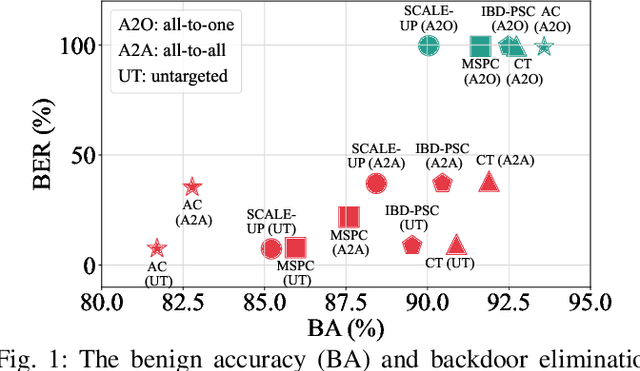
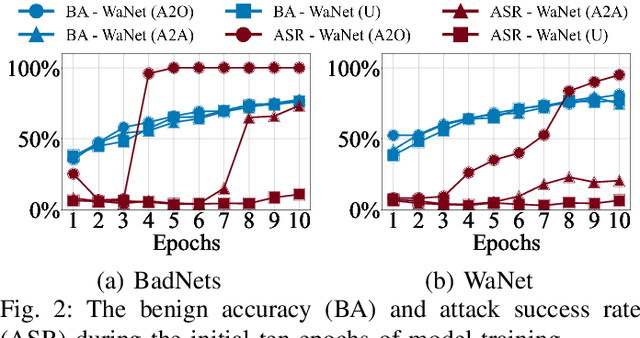
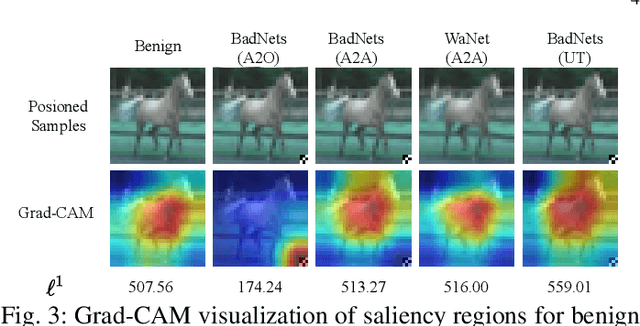
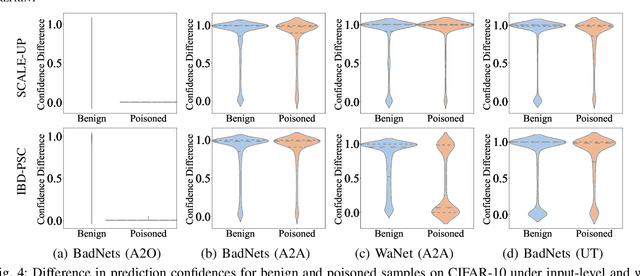
Abstract:Deep neural networks (DNNs) are susceptible to backdoor attacks, where adversaries poison datasets with adversary-specified triggers to implant hidden backdoors, enabling malicious manipulation of model predictions. Dataset purification serves as a proactive defense by removing malicious training samples to prevent backdoor injection at its source. We first reveal that the current advanced purification methods rely on a latent assumption that the backdoor connections between triggers and target labels in backdoor attacks are simpler to learn than the benign features. We demonstrate that this assumption, however, does not always hold, especially in all-to-all (A2A) and untargeted (UT) attacks. As a result, purification methods that analyze the separation between the poisoned and benign samples in the input-output space or the final hidden layer space are less effective. We observe that this separability is not confined to a single layer but varies across different hidden layers. Motivated by this understanding, we propose FLARE, a universal purification method to counter various backdoor attacks. FLARE aggregates abnormal activations from all hidden layers to construct representations for clustering. To enhance separation, FLARE develops an adaptive subspace selection algorithm to isolate the optimal space for dividing an entire dataset into two clusters. FLARE assesses the stability of each cluster and identifies the cluster with higher stability as poisoned. Extensive evaluations on benchmark datasets demonstrate the effectiveness of FLARE against 22 representative backdoor attacks, including all-to-one (A2O), all-to-all (A2A), and untargeted (UT) attacks, and its robustness to adaptive attacks.
Robust AI-Synthesized Speech Detection Using Feature Decomposition Learning and Synthesizer Feature Augmentation
Nov 14, 2024
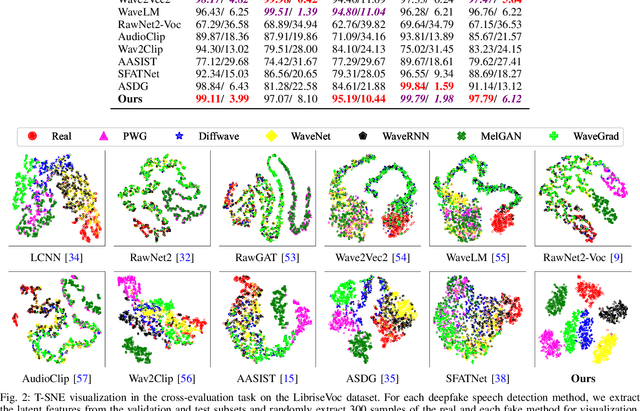
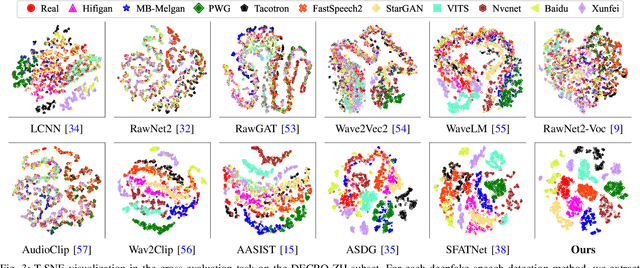
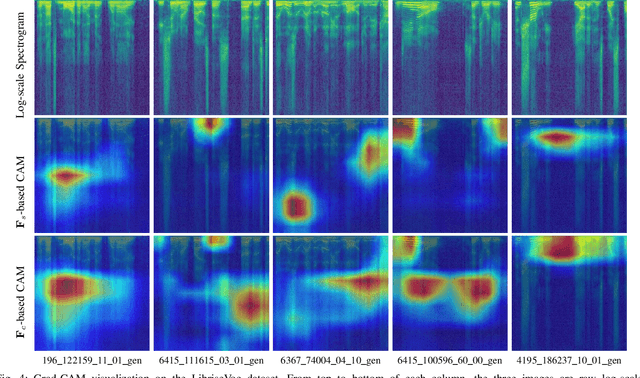
Abstract:AI-synthesized speech, also known as deepfake speech, has recently raised significant concerns due to the rapid advancement of speech synthesis and speech conversion techniques. Previous works often rely on distinguishing synthesizer artifacts to identify deepfake speech. However, excessive reliance on these specific synthesizer artifacts may result in unsatisfactory performance when addressing speech signals created by unseen synthesizers. In this paper, we propose a robust deepfake speech detection method that employs feature decomposition to learn synthesizer-independent content features as complementary for detection. Specifically, we propose a dual-stream feature decomposition learning strategy that decomposes the learned speech representation using a synthesizer stream and a content stream. The synthesizer stream specializes in learning synthesizer features through supervised training with synthesizer labels. Meanwhile, the content stream focuses on learning synthesizer-independent content features, enabled by a pseudo-labeling-based supervised learning method. This method randomly transforms speech to generate speed and compression labels for training. Additionally, we employ an adversarial learning technique to reduce the synthesizer-related components in the content stream. The final classification is determined by concatenating the synthesizer and content features. To enhance the model's robustness to different synthesizer characteristics, we further propose a synthesizer feature augmentation strategy that randomly blends the characteristic styles within real and fake audio features and randomly shuffles the synthesizer features with the content features. This strategy effectively enhances the feature diversity and simulates more feature combinations.
IBD-PSC: Input-level Backdoor Detection via Parameter-oriented Scaling Consistency
May 16, 2024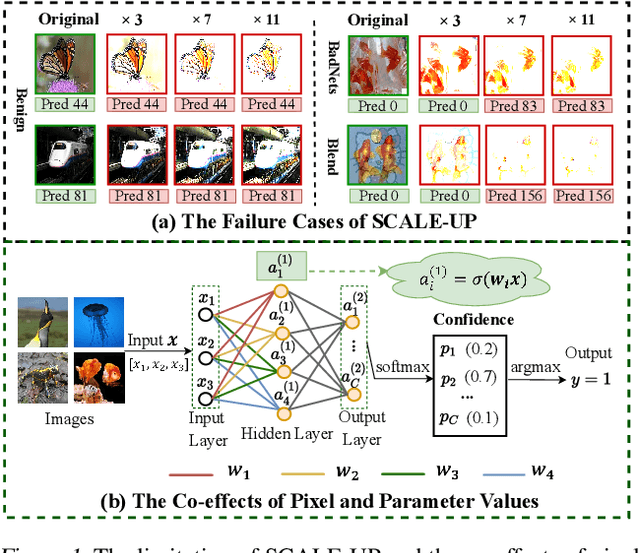

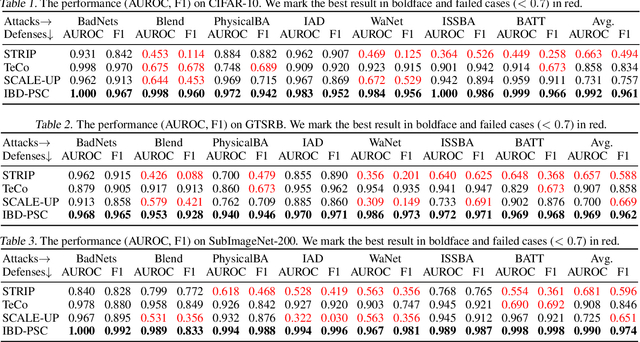

Abstract:Deep neural networks (DNNs) are vulnerable to backdoor attacks, where adversaries can maliciously trigger model misclassifications by implanting a hidden backdoor during model training. This paper proposes a simple yet effective input-level backdoor detection (dubbed IBD-PSC) as a 'firewall' to filter out malicious testing images. Our method is motivated by an intriguing phenomenon, i.e., parameter-oriented scaling consistency (PSC), where the prediction confidences of poisoned samples are significantly more consistent than those of benign ones when amplifying model parameters. In particular, we provide theoretical analysis to safeguard the foundations of the PSC phenomenon. We also design an adaptive method to select BN layers to scale up for effective detection. Extensive experiments are conducted on benchmark datasets, verifying the effectiveness and efficiency of our IBD-PSC method and its resistance to adaptive attacks.
Defense without Forgetting: Continual Adversarial Defense with Anisotropic & Isotropic Pseudo Replay
Apr 02, 2024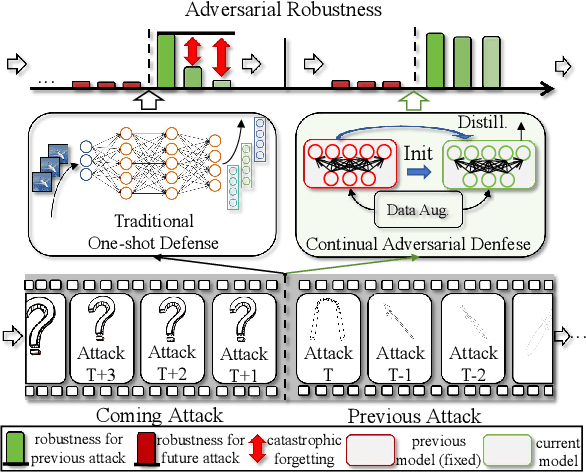
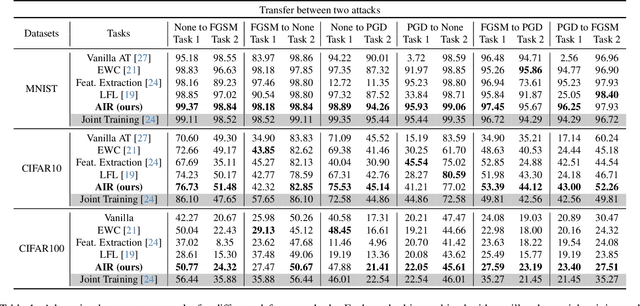
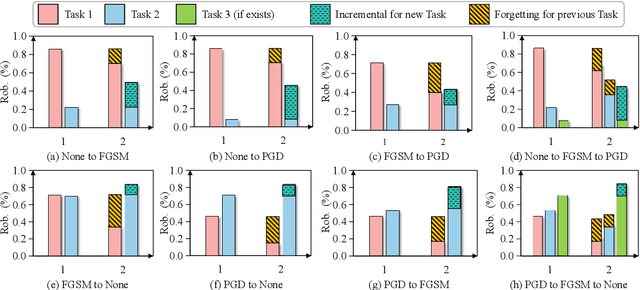
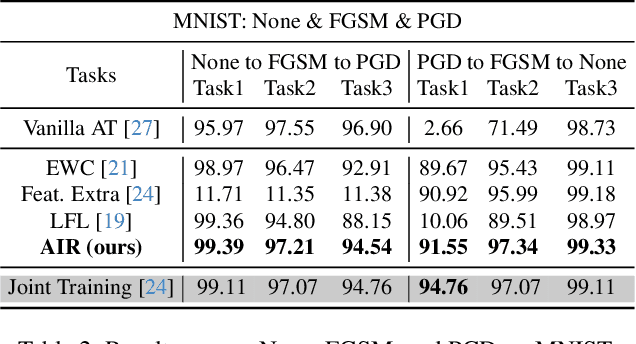
Abstract:Deep neural networks have demonstrated susceptibility to adversarial attacks. Adversarial defense techniques often focus on one-shot setting to maintain robustness against attack. However, new attacks can emerge in sequences in real-world deployment scenarios. As a result, it is crucial for a defense model to constantly adapt to new attacks, but the adaptation process can lead to catastrophic forgetting of previously defended against attacks. In this paper, we discuss for the first time the concept of continual adversarial defense under a sequence of attacks, and propose a lifelong defense baseline called Anisotropic \& Isotropic Replay (AIR), which offers three advantages: (1) Isotropic replay ensures model consistency in the neighborhood distribution of new data, indirectly aligning the output preference between old and new tasks. (2) Anisotropic replay enables the model to learn a compromise data manifold with fresh mixed semantics for further replay constraints and potential future attacks. (3) A straightforward regularizer mitigates the 'plasticity-stability' trade-off by aligning model output between new and old tasks. Experiment results demonstrate that AIR can approximate or even exceed the empirical performance upper bounds achieved by Joint Training.
Seeing is not Believing: An Identity Hider for Human Vision Privacy Protection
Jul 06, 2023Abstract:Massive captured face images are stored in the database for the identification of individuals. However, the stored images can be observed intentionally or unintentionally by data managers, which is not at the will of individuals and may cause privacy violations. Existing protection works only slightly change the visual content of the face while maintaining the utility of identification, making it susceptible to the inference of the true identity by human vision. In this paper, we propose an identity hider that enables significant visual content change for human vision while preserving high identifiability for face recognizers. Firstly, the identity hider generates a virtual face with new visual content by manipulating the latent space in StyleGAN2. In particular, the virtual face has the same irrelevant attributes as the original face, e.g., pose and expression. Secondly, the visual content of the virtual face is transferred into the original face and then the background is replaced with the original one. In addition, the identity hider has strong transferability, which ensures an arbitrary face recognizer can achieve satisfactory accuracy. Adequate experiments show that the proposed identity hider achieves excellent performance on privacy protection and identifiability preservation.
Uformer-ICS: A Specialized U-Shaped Transformer for Image Compressive Sensing
Sep 05, 2022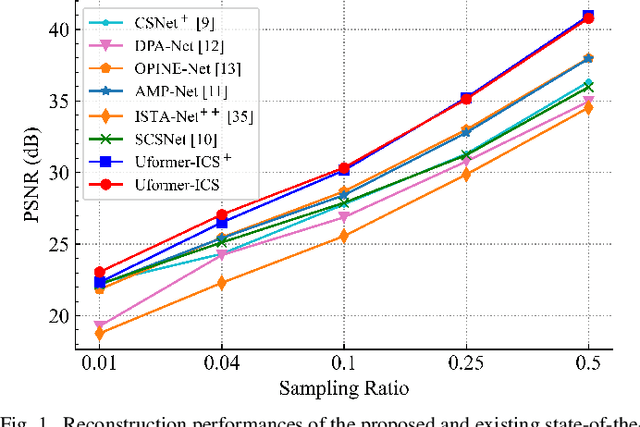
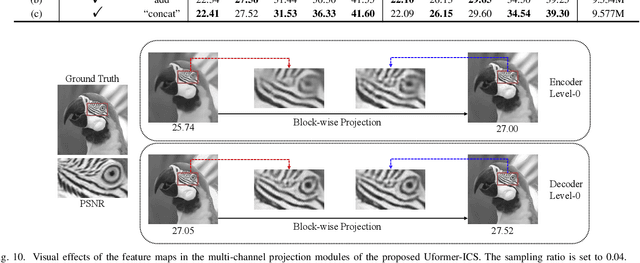

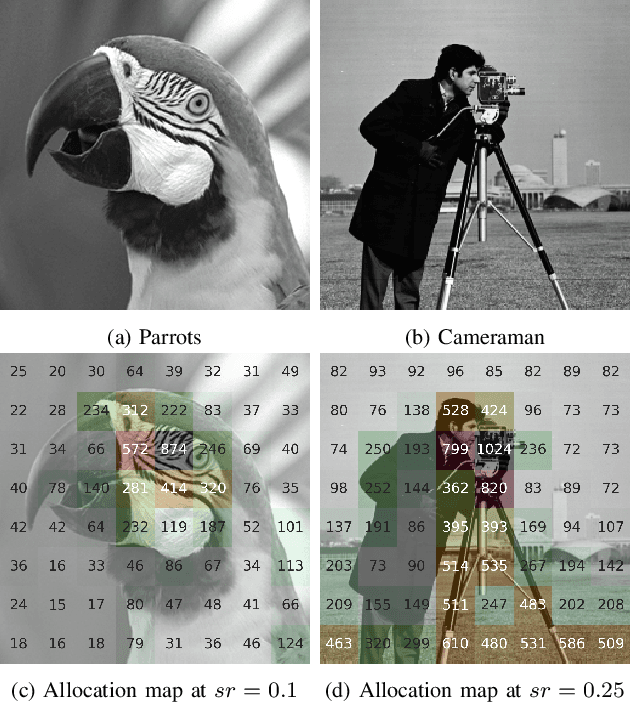
Abstract:Recently, several studies have applied deep convolutional neural networks (CNNs) in image compressive sensing (CS) tasks to improve reconstruction quality. However, convolutional layers generally have a small receptive field; therefore, capturing long-range pixel correlations using CNNs is challenging, which limits their reconstruction performance in image CS tasks. Considering this limitation, we propose a U-shaped transformer for image CS tasks, called the Uformer-ICS. We develop a projection-based transformer block by integrating the prior projection knowledge of CS into the original transformer blocks, and then build a symmetrical reconstruction model using the projection-based transformer blocks and residual convolutional blocks. Compared with previous CNN-based CS methods that can only exploit local image features, the proposed reconstruction model can simultaneously utilize the local features and long-range dependencies of an image, and the prior projection knowledge of the CS theory. Additionally, we design an adaptive sampling model that can adaptively sample image blocks based on block sparsity, which can ensure that the compressed results retain the maximum possible information of the original image under a fixed sampling ratio. The proposed Uformer-ICS is an end-to-end framework that simultaneously learns the sampling and reconstruction processes. Experimental results demonstrate that it achieves significantly better reconstruction performance than existing state-of-the-art deep learning-based CS methods.
 Add to Chrome
Add to Chrome Add to Firefox
Add to Firefox Add to Edge
Add to Edge